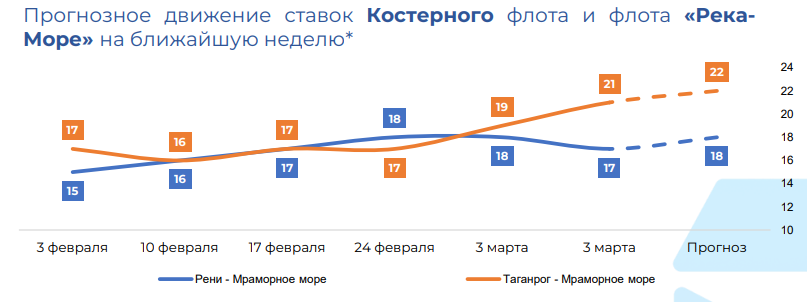The Black Sea freight market is facing high competition among shipowners, putting pressure on freight rates. Despite stable demand from grain traders, the gap in expectations between shipowners and charterers continues to grow, slowing down the process of concluding deals. The number of available vessels is increasing, further intensifying pressure on rates. Additional uncertainty comes from the global grain and metal markets, making forecasting more difficult. Exporters in the region face challenges in maintaining competitiveness and are forced to adapt their pricing strategies. No significant changes are expected in the near future. However, a possible reduction in the number of vessels in the region could lead to a partial recovery of freight rates.
In the Mediterranean Sea, the small-tonnage shipping market remains relatively stable, but cargo flow is declining. The main reasons are the seasonal drop in demand and the start of religious holidays in several countries in the region, leading to a reduction in new contracts. A particularly noticeable decline is seen in fertilizer shipments, which have traditionally been one of the key market drivers. At the same time, demand for agricultural products and steel remains weak, limiting the potential for freight rate growth. Shipowners are trying to keep rates at previous weeks’ levels, but high competition restricts price increases. In the longer term, the market may be supported by an improving economic situation or industrial production growth. However, no significant changes are expected in the short term.
In the Azov Sea, the freight market remains unstable despite a recent short-term rise in rates due to difficult ice conditions. As the weather improves, rates have started to decline since cargo volumes remain low and the number of available vessels remains stable. The grain cargo flow is limited, making the market sensitive to fluctuations in buyer demand. At the same time, coal shipments appear more active, although rates vary depending on the destination. Charterers are striving to maintain rates at an acceptable level, but the overall trend suggests a likelihood of further decline. In the short term, key factors will continue to be weather conditions and export activity. However, shipowners do not expect a sharp improvement in the situation yet.

 +380 67 625 91 65
+380 67 625 91 65